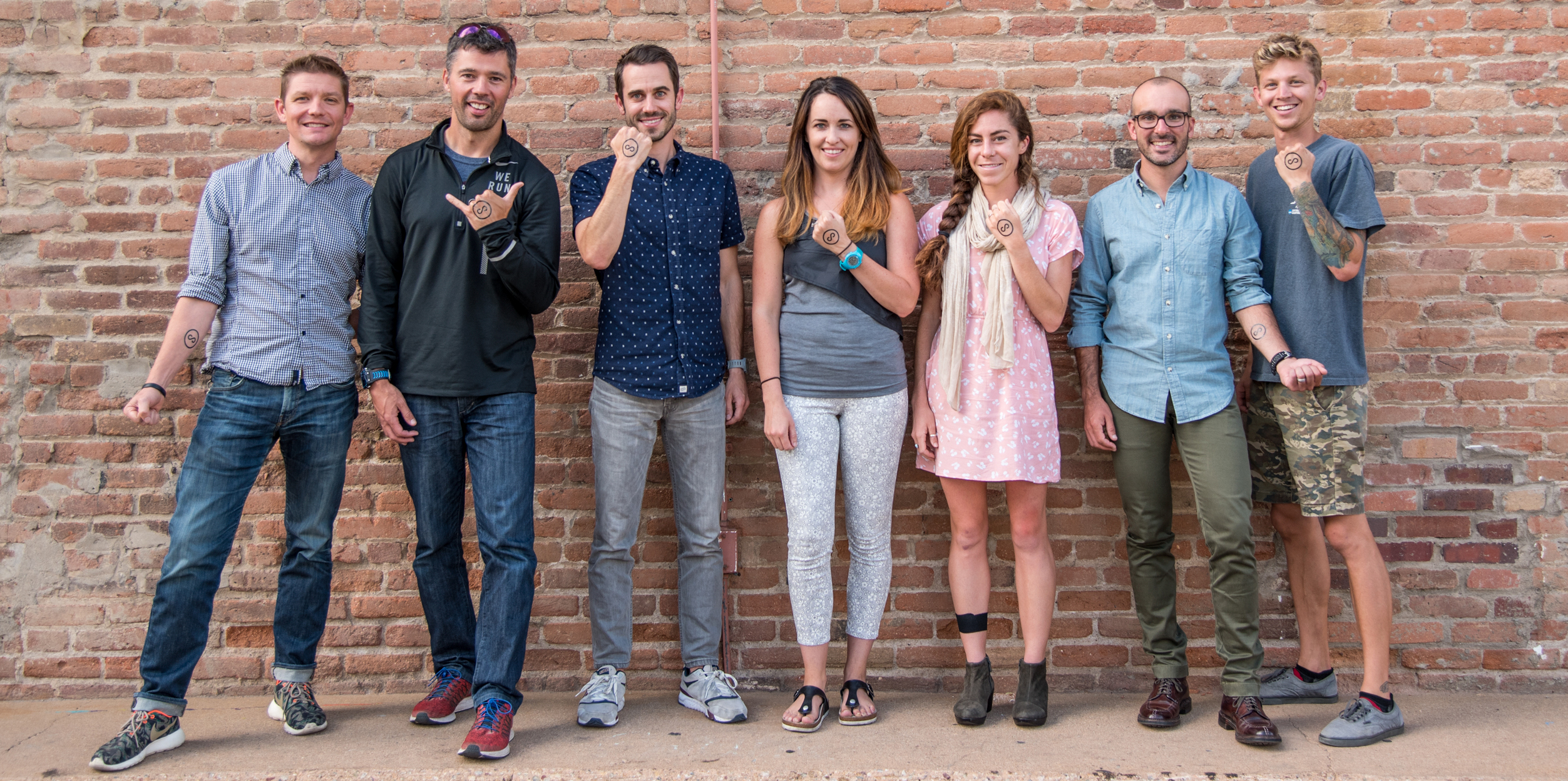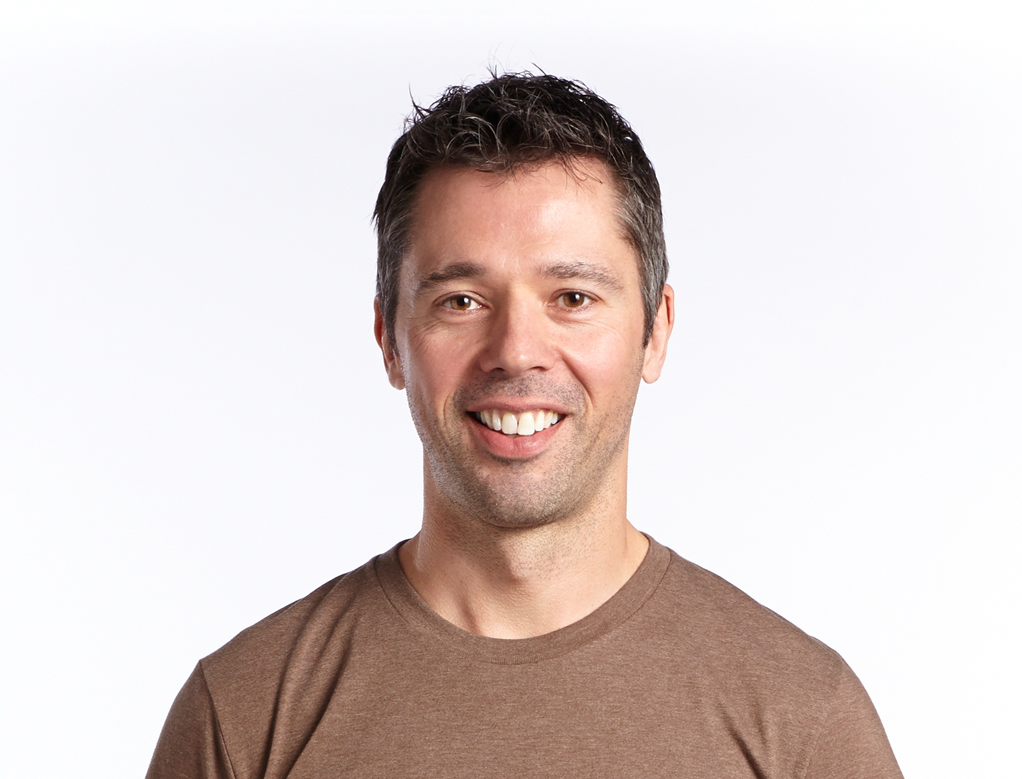Kevin Rutherford knows a thing or two about taking strong brands and making them better by upping the level of purpose. After serving as marketing director of Kashi foods, Rutherford took the helm as CEO of Mrs. Meyer’s Clean Day in 2010, where he introduced a new mission that helped transform the cleaning company into a purpose-driven brand focused on wellness for people and the environment.
In 2013, Rutherford embraced a new challenge at Nuun, the Seattle-based purveyor of electrolyte tablets that turn water into a sports drink. Under his direction (he’s still CEO), Nuun reformulated its entire product line to remove artificial ingredients, become completely plant-based, and obtain non-GMO certification.
In both stints as CEO, Rutherford emphasized a purpose beyond profit — and the brands boomed as a result. Mrs. Meyer’s rose to cult-favorite status, upgraded the product with cleaner ingredients, and doubled its business in the time Rutherford led the brand, and Nuun raked in $25 million in revenue last year, representing a three-year growth rate of more than 115 percent.
We asked Rutherford to elaborate on how executives can embed purpose from the top down, foster growth, and inspire a team.
NUUN At A Glance
• Location: Seattle, WA
• Founded: 2004
• Employees: 154 (54 full-time + 100 part-time Field Hydration Specialists)
• Impact: In 2017, in tandem with their customers, Nuun saved over 72 million single-use plastic bottles.
• Key Recognition: In 2017, Nuun made the Inc. 5000 list of the fastest-growing companies for the seventh year in a row; it ranked on Outside’s Best Places to Work List for 2017; and the company reports being the top sports drink product in sports specialty retail.
• Structure: Private for-profit; as of May 2017, all full-time employees have ownership through vested options/shares
• Memberships: People for Bikes, Conservation Alliance, Clean Sport Collective, Challenged Athletes Foundation
• 2017 Revenue: $25 million
• Mission statement: “Nuun is hydration that inspires you to move more.”

Since Rutherford became CEO, Nuun has reformulated its electrolyte drink mix tablets to be made with entirely plant-based ingredients.
The Interview
Both Mrs. Meyer’s and Nuun were successful when you arrived. Why take the risk of changing something that appears to be working?
Kevin Rutherford: You’re right, they were working, for the most part. But moving to a more conscious business is much more sustainable as a business proposition moving forward. People connect to purpose in a far deeper way. More than just creating a product for the sake of selling more, purpose-driven brands become personal to your team.
I’m not suggesting that people don’t take pride in working for conventional businesses. They do. But when they’re connected to something at a deeper level — like figuring out how to make a difference in the world and getting people to buy into that solution — employees find meaning in their job every day.
Did you always run teams with a focus on purpose?
KR: It was actually Kashi that changed my paradigm on it. Before Kashi, I was more focused on questions like what’s the business we need to drive, and what value system do we need to live by to make sure we accomplish that goal?
I’d describe my current mindset as much more belief-based: start with convictions, loyalty will result, and the business results will follow. And at least in these two examples we’re using, Mrs. Meyer’s and Nuun, we amplified growth in a short period of time just by getting everyone on board with company values and why we do what we do. Once you gain clarity around the company’s purpose, then you can start making necessary changes to products, operations, and communication to align more closely with those values.
How do you actually go about making this kind of change? Is there a playbook?
KR: For anyone coming into the CEO role, my advice would be don’t come in to change the business. Come in with an intent to understand what’s working. Tap into what people on the team are thinking, and find out what they love about what they do. The more you can do that, the more you can understand the DNA of the company and the platform from which you’re going to build.
At Mrs. Meyer’s, for example, people were really passionate around this remarkable product that had amazing fragrances. They didn’t necessarily understand the difference they were trying to make in the world, but after peeling back the onion, I saw an underlying passion around the planet. Once you tap into that common passion, you can begin to address questions about the company’s overall purpose and why we do what we do.
For Mrs. Meyer’s, that meant transitioning from a cleaning company to what was, in my mind, a wellness company. Wellness made sense for us in that we had a holistic approach that centered around saying “There’s got to be a better way.” That became part of our mission: a better way for the planet, a better way for the community, and a better way for the team.
How does that look? Do you meet with every employee?
KR: It’s highly unlikely you’re going to be able to meet with everyone, but you do try to meet with many. Group lunches and conversations are great, because people want to be heard, and should be heard — but that doesn’t get to everyone.
The way I got to everyone was through surveys. We asked questions like “What’s the difference you want to make in the world?” “Why do you work at Nuun, or at Mrs. Meyer’s?” This gives everyone the chance to at least be heard.
Is it challenging to get employees on board with changes like these?
KR: You use intel from your team to develop a hypothesis about the purpose of your company. To gain buy-in, you need to find some key influencers in the team that you can vet your hypothesis against. This is going to sound bizarre, but there’s a little math to my madness on this one.
Years ago, I attended a conference at the University of Minnesota. A student was presenting a social client case study about engagement and said, “If you want to influence an entire group, consider getting the square root of the total on board first.” I was confused. “The square root of the total?” Then he started using examples of how key influencers can rally the company at large around a collective mission.
I’ll use Nuun as an example. I’m simplifying the math here, but let’s say that at the time we had 49 people and needed 7 influencers to preach the greater good, if you will. I asked these influencers to vet my hypothesis about the company’s mission and purpose, refine it, and ultimately present it to the wider team.
That’s how you start to build your business plan, because — if you’ll remember — this all stems from what everybody was thinking at the beginning. With the backing of influencers, the new mission starts to permeate the entire company. The next thing you know, everyone’s living by it and incredibly passionate about it.
How long does it take to introduce a company mission and get everyone on board?
KR: If you’re coming into the position, you want to start thinking this way in the first month. It doesn’t mean you’re making the changes in the first month. The timeframe could take up to six or 12 months, but there are iterations that happen throughout the process. Iterate, iterate, iterate, and keep refining to a point where you feel confident putting your new mission out there.
How do you suggest that teams keep the conversation about purpose going?
KR: We did monthly town-hall-style communications at Mrs. Meyer’s, as well as constant written communication about things we were doing as a company for the greater good. And we do the same at Nuun. We ask employees to share their thoughts. We invite them to participate in purpose-driven programs like volunteering or customer engagement, and we encourage them to lead by example.
We also continually remind them that we’re going to keep massaging this and getting it tighter and tighter. It’s not rocket science, at the end of the day. The biggest mistake people make is being too tentative about putting something out that’s not fully fleshed out. Put yourself out there and say, “Here’s what I think, and this is how it connects to the mission.” Even though it’s not complete, that’s okay. Put it out there, but tell people it’s not complete and invite them to be a part of the process.
Talking is one thing, but how do you move from conversations to implementation?
KR: Once you develop your mission and purpose and share it with the team, the question becomes, “You guys, how do we bring this to life?” My advice would be to over-communicate. Be very transparent, and approach implementation through the lens of the company’s business model and culture. Then, you can start to focus on how your purpose applies to your product, your external communications, and your customers.
As the saying goes, “Culture eats strategy for breakfast.” If I had to make a choice, I’d take a resilient, strong, passionate culture over strategy any day. But the multiplier effect — a great culture aligned to an amazing strategy — is even more powerful, and it’s tough to beat a company like that.
Take Nuun as an example. We didn’t have a purpose mission statement at Nuun when I came in. We were an electrolyte tablet company that was all about hydrating people. Today, we’re about hydration that inspires movement, which is very different than a functional benefit of an electrolyte tablet. We want to make remarkable products, but now our company is obsessed with getting people to move.
When I came in, we were starting to push forward on expansion and scaling with volume. That’s a good thing; however, you can’t lose sight of your core. Just like with your teammates, you need to make sure you know your core customers. So I did a re-emphasis on the sport specialty segment, because it’s tightly connected to the core consumer, who we didn’t want to walk away from. Again, get back to your DNA. Don’t necessarily think a new mission means abandoning where you were.
Considering your position on purpose and company culture, what do you think makes a strong CEO?
KR: To use a sport analogy, as someone coming in, you should think of yourself as a player-slash-coach. A lot of people who come into the leadership role as CEO feel as if they need to be very strong and directive. And that will work, in many cases, for a period of time. The challenge is that it doesn’t sustain itself. Eventually, a command-and-control approach falls apart because you didn’t bring people in along the way.
I think of myself as a player-slash-coach. As the coach, I’m going to help you understand where we can go. I’m going to help you dare to dream, help you see the possibilities, and get you on board to believe in them. Although it’s going to be a little scary because it’s change, I’m going to lead you with positive intent.
As a leader, it’s also important to be okay with vulnerability. Express that, show some humility, and say: “I don’t know everything. That’s why I need you guys to help me.” Give them confidence to be a part of the solution. You need to make sure you are a player on the team, not just the one directing it. That’s why the player-slash-coach, not just the coach, is mission critical.
How can CEOs take this to heart and present themselves as players on the team as well as leaders?
KR: It’s all about leading by example. You need to be willing to do everything from taking out the trash and putting dishes in the office dishwasher to meeting with the board and investors. I think that’s lost on a lot of folks. They look at minor tasks and say, “That’s not my role.”
Actually, what you want to demonstrate is that everyone has a role to play, but sometimes you need to shift out of your position to help where there are weak spots and elevate the entire team. As a leader, your ultimate goal is to help bring people up. Help them believe in themselves. Help them believe that they can accomplish more than what they thought they could as individuals and as a team. That’s why you have to get intimate in terms of connecting with as many teammates as you can.
Any parting words of advice for executives?
KR: Don’t underestimate the power of the people. This happens all the time. As we transition, new executives almost start to think we need a whole new team, but you can build from your strengths, from your people, and also from the original mission of the brand.
Leveraging your strengths, believing in your team, and remembering the culture will make you thrive in the long term, and the business results will follow. It’s not a flip-a-switch-overnight scenario. It takes investment of time and energy. You’re going to need to do it every single day, because it’s constantly evolving. Hopefully you’ll learn to love it.
Rutherford’s 5 Tips for Incoming Purpose-Driven Execs

Rutherford (second from left) and other members of the Clean Sport Collective showing off the nonprofit’s logo.
1 // Build on the good to become remarkable
Find the good in both the people and the brand. As an incoming executive, the idea is to find the company’s strengths and leverage them.
2 // Believe
Help your team members believe they can accomplish more than what they previously thought they could. When the team believes in themselves and the company’s purpose, business results will naturally follow.
3 // Be consistent and resilient
Successful leaders can keep everyone focused on the mission, as well as the near-term tasks at hand. Those little steps are the mojo the team needs to sustain momentum.
4 // Celebrate
Find the wins and celebrate them … often. Only do it for true wins. Trust me, they are out there if you are looking. But please don’t give artificial positive reinforcement.
5 // Issues are opportunities for improvement
In the spirit of positivity, some try to avoid inherent issues in the company, but that is not a pathway to success. Instead, use radical candor and self-reflection as a company and as individuals. Ask yourselves, “If we had to do it all over again, how would we do it?” Thoughtful analysis lets you address the issue and do it better moving forward.





